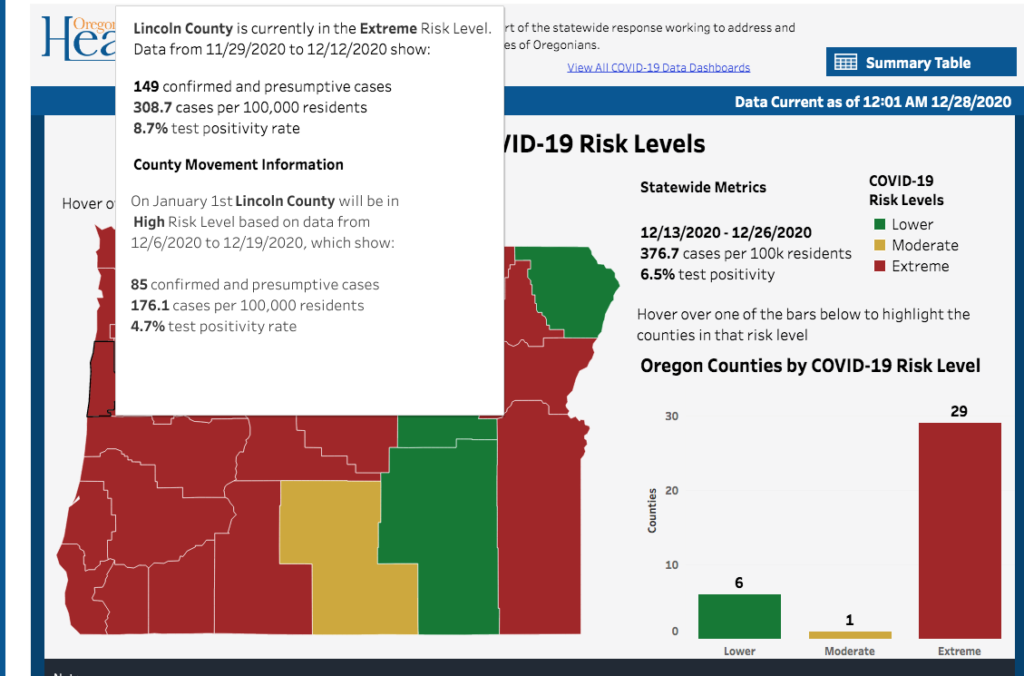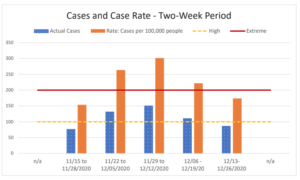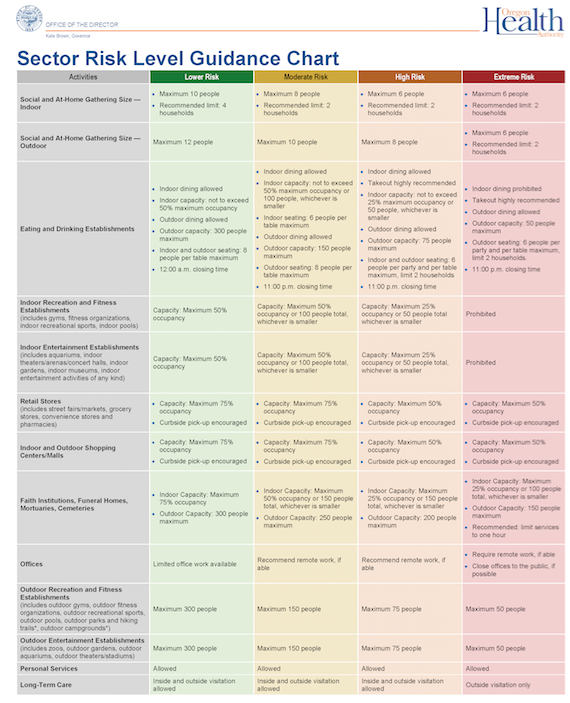
Lincoln County residents can dine in restaurants and bars again – if they feel comfortable – starting Friday.
Unfortunately, they won’t be able to do that New Year’s Eve.
Lincoln County was one of five counties the state announced Tuesday will drop from restrictions under its “extreme risk” category down to the “high risk” category effective Friday, New Year’s Day, because the number of COVID-19 cases had declined the past two weeks.
That means restaurants and bars which had been restricted once again only to takeout or outside dining, can re-open to customers for inside service. Social gatherings that are outside can now have eight people, instead of six.
And, gyms, pools, indoor recreational sports, aquariums, theaters, museums and indoor entertainment of any kind can reopen at 25 percent of capacity.

All of those had been closed since Dec. 18 when the county’s COVID-19 cases the previous two weeks spiked to more than 307 per 100,000 population.
As of Monday, the county’s case rate had dropped to 176 per 100,000, according to figures released by the Oregon Health Authority.
But, if the county’s case rate increases again over the next two weeks as the result of coronavirus tests coming back from Christmas gatherings it could once again be pushed into the extreme category. That threshold is 200 cases per 100,000 population over a two-week period.
Gov. Kate Brown Brown praised the counties that moved down on the list, but said ratings can move up again if infection rates increase. Clatsop, Coos, Douglas and Morrow also dropped to “high risk” and Lake County moved from moderate to lower risk.
“If communities let down their guard too early, we could see our hard-won progress unravel just as quickly,” Brown said.
The levels are reviewed every two weeks. The next report will be Jan. 15.
Counties are assigned one of four risk levels based on the spread of COVID-19 infections: extreme, high, moderate and lower. The higher the level, the more restrictions on activities, businesses and gatherings.
The pandemic has killed 1,433 people in Oregon. More than 110,000 Oregonians have tested positive for COVID-19 since the pandemic started.
High risk is the first level at which businesses and workplaces can open up more, albeit with restrictions still in place. For example, indoor dining is allowed in restaurants using up to 25 percent of the building’s capacity or 50 people, whichever is smaller. Indoor entertainment facilities and gyms and other indoor recreational facilities can reopen at the high risk level with the same capacity limits as restaurants and bars. Earlier in December, the entire Oregon coast was in the extreme risk category.
Effective Jan. 1, counties are assigned the following risk levels based on the spread of COVID-19 infections:
Lower Risk: Gilliam, Grant, Harney, Lake, Sherman, Wallowa, and Wheeler;
Moderate Risk: None;
High Risk: Lincoln, Clatsop, Coos, Douglas, and Morrow;
Extreme Risk: Baker, Benton, Clackamas, Columbia, Crook, Curry, Deschutes, Hood River, Jackson, Jefferson, Josephine, Klamath, Lane, Linn, Malheur, Marion, Multnomah, Polk, Tillamook, Umatilla, Union, Wasco, Washington, and Yamhill.
“After weeks of diligent work by local leaders and public health officials to implement health and safety measures in their communities, this week’s county data is a welcome sign that we are making progress in stopping the spread of COVID-19 in Oregon,” Brown said in a statement. “The county risk level framework is meant to put us on track to reopen our schools, businesses, and communities. It is not easy. Oregon families and businesses have made incredible sacrifices.”




